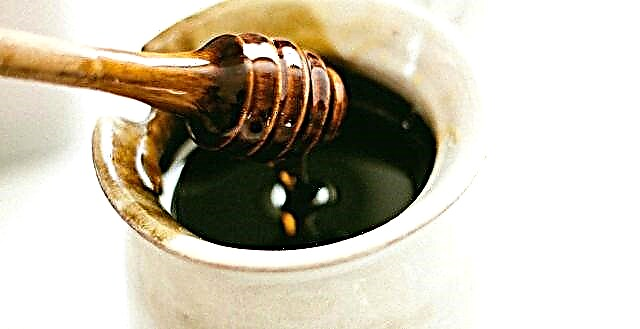Share
Pin
Tweet
Send
Share
Send
Sauces are an integral part of a large assortment of hot and cold dishes from vegetables, cereals, pasta, meat, fish and other products. Sauces are divided into two groups - hot and cold.
Depending on the initial products, there are hot sauces on meat and fish broths, mushroom broth, sour cream, milk and egg-butter. Cold sauces include mayonnaise, vegetable sauces, dressings and jellies. Oil sauces, sweet sauces and syrups are also included in the group of sauces.Sauces on meat broth are divided into red and white. Red and white sauces are prepared on the fish broth, as well as on the meat broth.
Various sauces basic and derivative from them. Derived sauce is prepared from the main with the addition of various products. In the formulations of the main sauces, losses in the range of 2.5–3% are foreseen when preparing derived sauces based on them.
The rate of investment of products is given based on 1 kg of finished sauce; the consumption of salt, pepper and bay leaf in recipes is not indicated.
The consumption of spices per 1 kg of sauce is as follows: salt - 10 g, pepper - 0.5 g, bay leaf - 0.2 g; on the marinade (except those listed): cloves - 1 g, cinnamon - 1 g. For the preparation of milk sauce, only salt is used - 8 g.
The citric acid indicated in the formulations can be replaced with lemon juice at the rate of 1 g of citric acid - 8 g of juice obtained from 20 g of lemon. Citric acid is dissolved in warm boiled water (1: 5) and introduced into the finished sauce. In the case of using wine, it is poured into heated dishes, covered with a lid, allowed to boil and quickly added to the sauce.
Ready strained sauce is seasoned with margarine or butter, which are placed in slices of 3-5 g and mixed thoroughly until completely combined with the sauce. Then the sauce is heated to 80–85 degrees, but not boiled, otherwise the oil will stand out on the surface of the sauce. Dressing with fat increases calorie content, improves the taste and texture of the sauce, makes it more uniform.
Red meat sauces. The assortment of meat red sauces is quite diverse. To prepare them, use red main sauce or tomato products of industrial production.
Red sauce is prepared on brown meat broth and wheat flour, fried to a light brown color (red sausage), with the addition of tomato puree, onions, roots and spices. Wheat flour for red sauces is fried without fat.
To prepare derivative sauces, add onion, mushrooms, pickles, wine, mustard and other products to the red main sauce, which give a peculiar taste and determine the name of the sauce.
The sauce is white basic. It is cooked in meat broth, combined with flour and vegetables, passivated on fat. The broth is cooked from food bones or use broths obtained by cooking beef, poultry and other meat products.
Bones washed and chopped into pieces 5-7 cm long (bone marrow is removed from the vertebral bones), poured with cold water, brought to a boil, foam removed and boiled at a low boil for 3-4 hours, periodically removing fat. 40-60 minutes before the end of cooking put vegetables. The finished broth is filtered.
To prepare white sauce, pour sifted flour into melted fat and sauté with continuous stirring, avoiding burning. A quarter of the hot broth is poured into the flour and cooled to 60–70 degrees and mixed until a homogeneous mass is formed, then the remaining broth is gradually added. After that, put chopped parsley, celery, onions and cook for 25-30 minutes. At the end of cooking, add salt, black pepper, bay leaf. The sauce is filtered, rubbing the boiled vegetables, and brought to a boil. Ready sauce is used as a stand-alone, it is seasoned with citric acid and fat.
On the basis of white sauce, white sauce with egg, tomato, etc. is prepared.
Dairy sauces. Prepared in whole milk or milk, diluted with broth or water, with the addition of wheat flour, Passerovated to a light cream color in butter. Butter flour stewed in oil is diluted with hot milk or milk with the addition of broth or water and boiled for 7-10 minutes with a slight boil. Then put sugar, salt, filter and bring to a boil.
Milk sauces are prepared in various consistencies: liquid, medium density and thick. Liquid sauces are used when dispensing vegetables, cereals and other dishes; medium density - for baking meat, fish, vegetables and for dressing boiled vegetables (carrots, turnips, etc.); empty - for stuffing.
Sour cream sauces. Prepared from sour cream with the addition of wheat flour and butter or margarine and from sour cream with the addition of white sauce cooked in broth (meat, fish) or vegetable broth. Sour cream sauces prepared on meat broth or in vegetable broth are used for meat, fish and vegetable dishes, and on fish broth - only for fish dishes.
For sour cream sauce, natural flour is lightly sautéed without oil, cooled, mixed with butter, put in sour cream, brought to a boil, stirred, seasoned with salt and pepper, boiled for 3-5 minutes, filtered and brought to a boil.
Mushroom sauces. Prepared on a decoction of existing mushrooms. Ready mushrooms, chopped in the form of straws or finely chopped, are put in the sauce.
Mushroom sauce is served with potato and cereal dishes - meatballs, meatballs, casseroles, rolls, etc. It can be served with meatballs, meatballs, etc.
Egg-oil sauces. The composition of these sauces includes a large amount of butter, eggs and other products. To prepare sauces, margarine is sometimes used instead of butter. Serve egg-oil sauces for dishes of low-fat boiled fish, some types of vegetables and cereal dishes.
To get the sauce, finely chopped steep eggs, parsley or dill, salt and citric acid are placed in the melted butter. In the white sauce, add butter, finely chopped hard-boiled eggs, salt, citric acid and greens.
Sauces are cold. Served with cold dishes of fish, meat, poultry, game, vegetables. These sauces include mayonnaise, horseradish with vinegar, horseradish with sour cream, as well as vegetable marinades and salad dressings, herring.
Mayonnaise sauce is prepared only in the absence of industrial production mayonnaise. Vegetable oil is poured into the crushed raw yolks with salt, sugar and mustard in a thin stream with continuous unilateral stirring. When the oil is combined with the yolks and the mixture turns into a thick, homogeneous mass, vinegar is poured. You can add strained cooled white sauce to the sauce. Flour for white sauce is heated without fat, preventing color changes, cool. Then diluted with cold broth mixed with vinegar, brought to a boil and cooled. Instead of flour, potato or maize (corn) starch can be consumed.
Share
Pin
Tweet
Send
Share
Send



